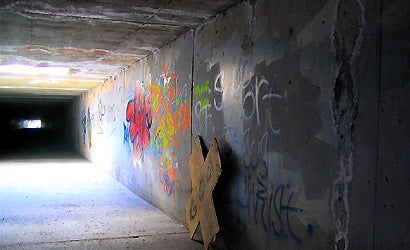My Project: Tunnel Vision
How photographer Duncan Gold shows what lies beneath.

“I’ve always been fond of underground places,” says Duncan Gold. The 38-year-old Colorado Springs, CO resident spends his time hunting for places that are truly unseen: storm drains, abandoned mine shafts, missile sites, evacuation tunnels, even an entire ghost town buried in the mountains.
Gold, who works by day in computer network security, posts his images regularly on the community photo blog he operates, Autowitch.org. He’s had the itch to dig from early childhood-when his father, a cave photographer, brought him on shoots. But the photo part kicked in only about five years ago. On a trip in northwest Colorado, Gold explored Pinnacle House, an old ruin on a peak along a canyon, accessible only through an underground tunnel. He pulled out his Canon FTB, started shooting, and hasn’t stopped since.
|| |—| | Duncan GoldPhoto Gallery****www.autowitch.org| Now shooting with a Canon PowerShot Pro or A70, Gold pursues the overlooked (drains and sewers) along with the obscure-missile bases, mines, passageways leading from historic buildings that once housed politicians or brothels. Often he enlists friends to help him carry equipment or “light paint” for images like the ones included here-illuminating the tunnel or shaft with a flashlight during long exposures on a tripod.
How does he find the sites? A mix of instinct and luck, along with library or internet research on sites such as Google Earth. Gold declined to share exact locations, noting that a lot of the sites are dangerous-high in toxins or prone to flash floods-and not advised for the ill-prepared photographer.
Before going underground, he says, “if there are other things you want to do with your life, do those first. And if you’re going somewhere that may be toxic, be prepared: I bring T-100 (asbestos-rated) respirators, multiple redundant lights-trust me, you don’t want to be in the dark!-a hard hat, and a lot of rope.” Also, he adds, “You need to know the climate. Some storm drains can go from a few inches of water to a few feet in about 30 seconds.”
Gold is the first to point out that his project is tough work. “It’s a harsh environment-just barely above freezing, the atmosphere is poor, the conditions are poor,” he says. “At the same time there’s something I find very beautiful-there’s a story that place has to tell.”